
The skinny on sugar
Sugar is added to all kinds of foods that you really wouldn’t expect to find it in—even foods you assume are “healthy” often have added sugar. In fact, it’s the very foods and drinks you may not consider sweet that can take you by surprise, so it pays to read labels. It’s not like you need more sugar, right? It provides just empty calories that add girth to your waistline—and raise insulin, putting you at risk of high blood pressure, diabetes, heart disease, and more. Take a look at what actually happens to your body on sugar.
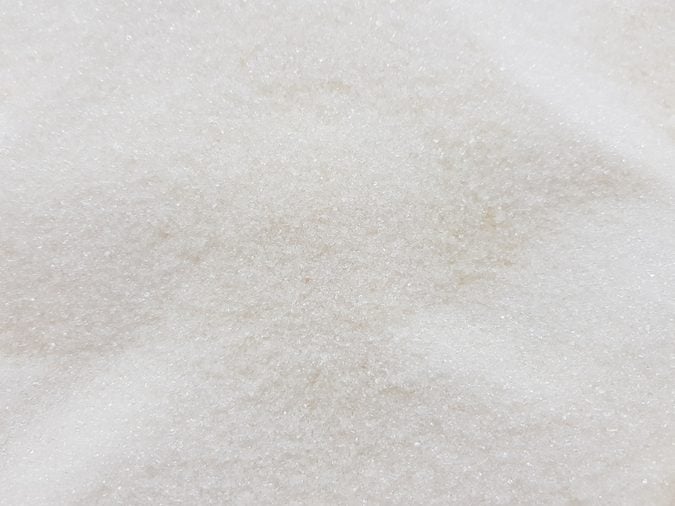
Sugar by the numbers
While sugar turns up naturally in foods like fruits, vegetables, and dairy, those aren’t the sources you need to worry about. It’s the added sugar in manufactured foods that are a major health concern in the United States. That’s why the American Heart Association (AHA) recommends that you keep your intake of added sugars to under 100 calories worth per day for women—that’s about 6 teaspoons. For men, it’s 150 calories a day or about 9 teaspoons. To put this into perspective, a 12-ounce can of regular soda has about 10 teaspoons of sugar.
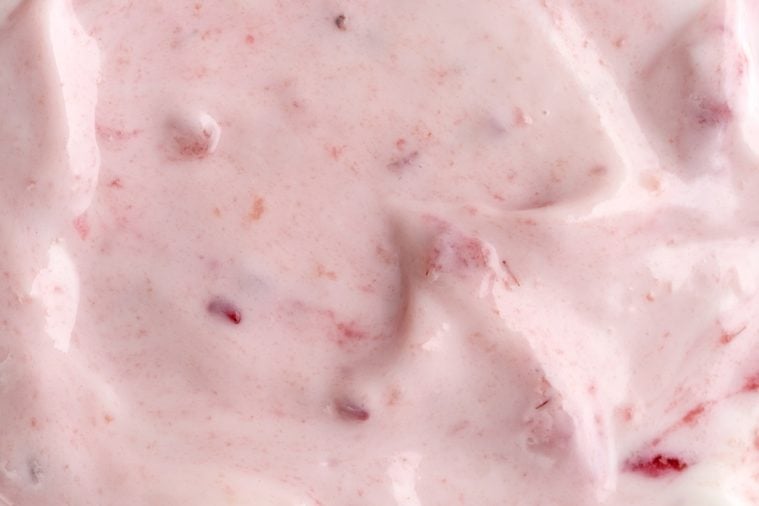
Your morning yogurt
Flavored yogurts are loaded with hidden sugars, calories, and other unhealthy additives. One container of strawberry Dannon yogurt has 22 grams sugar. Its plain counterpart gets only 11 grams from its natural milk sugar. That doesn’t mean your yogurt has to be flavorless. In fact, Monica Auslander Moreno, MS, RDN of Essence Nutrition, says she never eats plain yogurt. “It has to have ‘modifiers,'” she says. “It’s like wearing a gorgeous gown to a gala but with no jewelry.” She recommends adding chia seeds for crunch instead of sugary granola. Vanilla, almond, or mint extracts can also provide flavor without sugar. “Microwave or boil your fruits into a compote to make help the fruit flavor integrate with the yogurt.” If you’re looking for creaminess, add one teaspoon of melted unsweetened nut butter. “You could also chop a date into your yogurt, which gives it a delightful chewiness,” suggests Sophie Uliano, a New York Times bestselling author and holistic nutritionist. Here are 13 more easy food swaps to reduce your sugar intake.
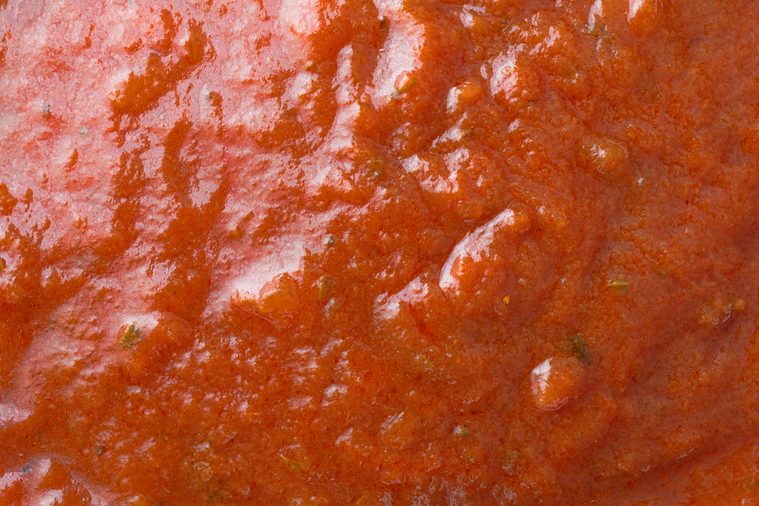
Marinara sauce
Manufacturers add sugar to bring out the natural sweetness in tomato sauces and to balance the acidity. A ½ cup serving of ready-to-serve pasta sauce has 6.5 grams of sugar. As not all brands of pasta sauce are the same, you have to read the labels. You want a jar that has less than a gram of sugar per serving or one that says “no sugar added.” Even better, make your own sauce. “Buy BPA-free cans of fire-roasted tomatoes. Microwave or heat them on the stove,” says Auslander Moreno. “Add your own anti-inflammatory basil, oregano, and garlic for even more flavor.” It’s almost as easy as opening a jar. “A good sauce requires a sweet taste and acid,” says Uliano. “Add a squeeze of lemon and grate a couple of carrots into your sauce.” Learn how the keto diet helped one woman kick her sugar addiction.
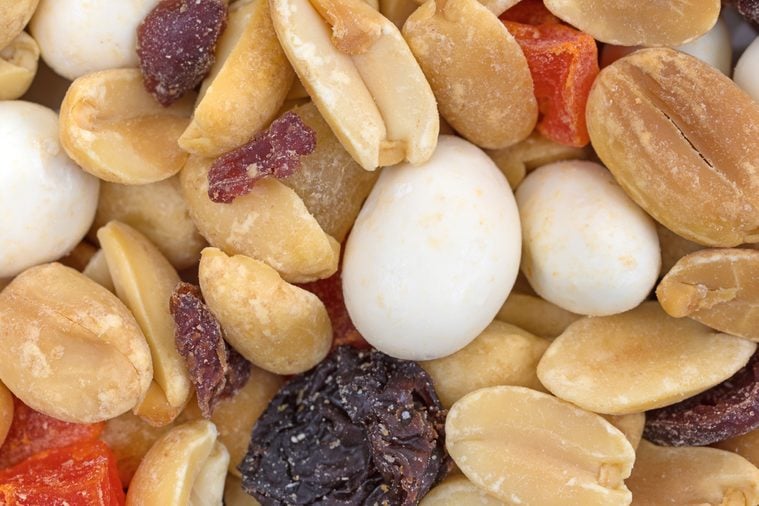
Store-bought trail mix
Premade trail mixes with salty pretzels and candy sure are tasty, but they’re also far from healthy. Instead, make your own trail mix you can eat without the guilt. Start with some nuts (raw are better than roasted) and add berries. Auslander Moreno suggests using goji berries, which are lower in sugar than raisins or dried cranberries. “If you need that ‘chewiness’ with your crunch from the nuts, use a few teaspoons of these antioxidant-packed items,” she says. Uliano says she gently toasts raw nuts to make them crunchier and tastier. Mix and match until you find a combo that suits your palate. This quiz can tell you how well you are equipped to spot the sugar in your food.
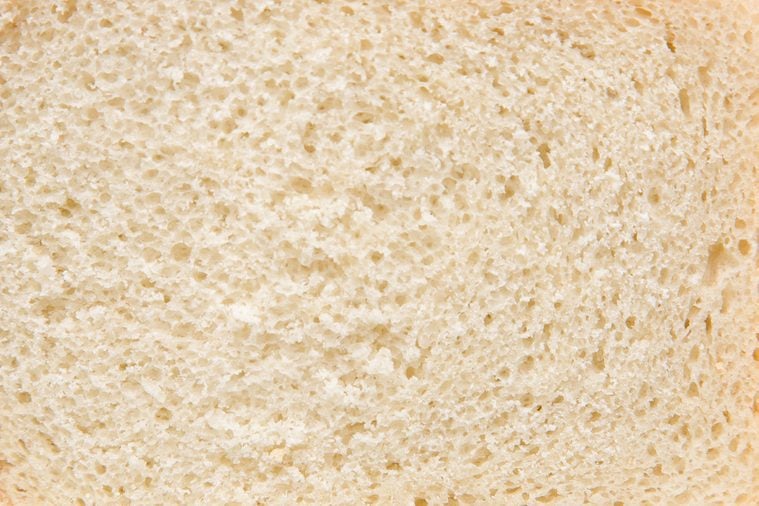
White bread
When white bread is manufactured, it’s stripped of fiber, vitamins, minerals, and healthy fats. When you eat it, your body definitely registers the lack of nutrients, and sends a signal that even though you just ate, you need more food. As a result, you get hungrier. To make matters worse, almost all manufactured breads typically have sugar added, so it’s important that you read the ingredients list. “You only need four ingredients in a healthy loaf of bread: whole wheat flour, water, sourdough starter, and salt,” says Uliano. Amy Gorin, MS, RDN, owner of Amy Gorin Nutrition in New York, says that you should go for whole-wheat or whole-grain varieties. “When you’re looking for bread, choose a whole-wheat or whole-grain bread with the first ingredient as a flour that contains the word ‘whole,'” says Gorin. “This reveals that the bread contains plenty of good-for-you whole grains.” This is the real difference between whole wheat and whole grain.
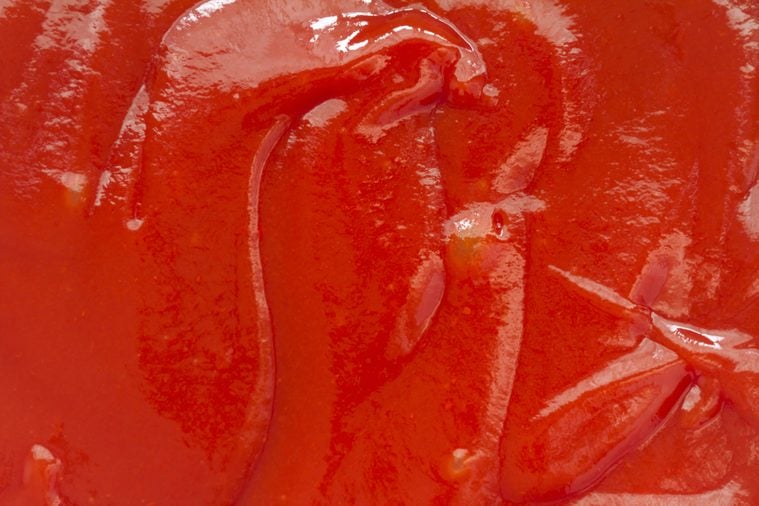
Ketchup
You wouldn’t spoon sugar onto your burger bun, right? Yet, when you add ketchup, you’re essentially doing the equivalent: A tablespoon, depending on the brand, can have nearly 4 grams of sugar. And few of us actually limit our serving size to one tablespoon. That’s why it’s important to look for low-sugar or no-added-sugar versions. “Tomato paste is just made of tomatoes. So it won’t taste exactly like ketchup, but it works as a great substitute in recipes,” says Patricia Bannan, MS, RDN, a Los Angeles-based nutritionist and healthy cooking expert. “Not only does tomato paste have less sugar and sodium compared to ketchup, it also provides important nutrients like vitamin A, vitamin C, iron, and potassium.” Or top your meal with homemade salsa. You’ll still get that tomato flavor, but with less processed ingredients, advises the AHA.
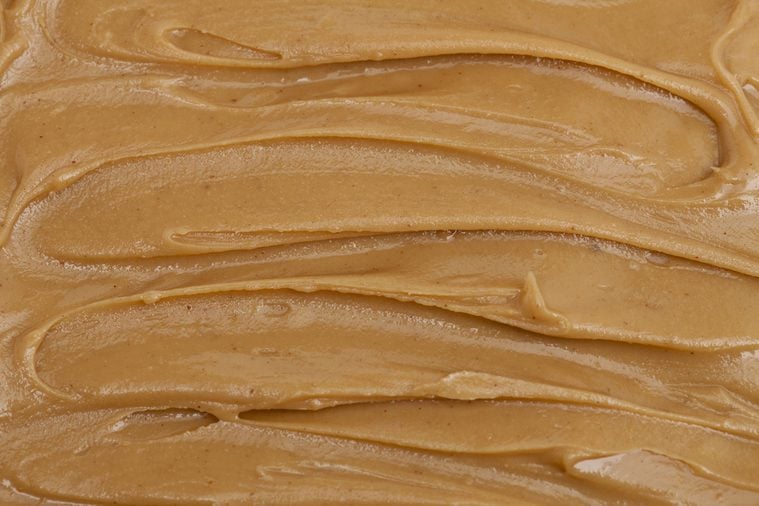
Peanut butter
Peanut butter should be packed with fiber, protein and monounsaturated fats—ingredients that can lower your risk of heart disease and help improve the function of your blood vessels, says the Mayo Clinic. But many commercial spreads contain sugar and fillers. A creamy peanut butter by Jif has 3 grams of sugar in just 2 tablespoons. Look for jars without added sugars—you can identify sugar in the ingredients by looking for names like evaporated cane juice, corn syrup solids, high-fructose corn syrup, molasses, and honey. “When choosing a peanut butter, it should only say ‘dry roasted peanuts’ on its ingredient list—and sometimes sea salt—that’s it,” says Bannan. And choose full-fat varieties: In reduced-fat branks, healthy oils are replaced with sugar and starchy fillers.
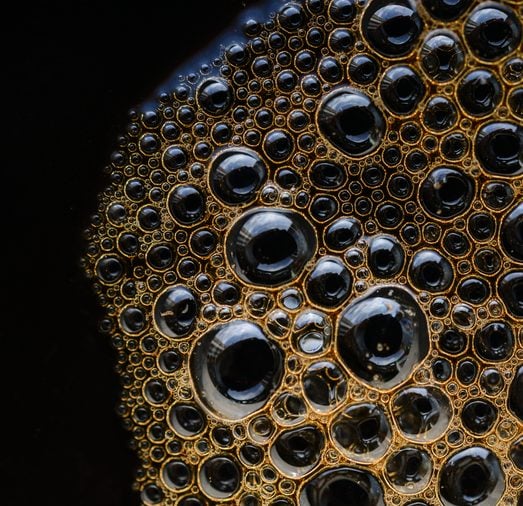
Coffee drinks
You probably already guessed this: A Frappuccino from Starbucks isn’t just coffee—it’s liquid sugar. Case in point: You’ll get 61 grams of sugar from a grande-size cup (along with all the fat in whole milk and whipped cream). For a better morning pick-me-up, take a pass on this “coffee milkshake” and, instead, drink your coffee with a dash of milk or order a latte. Unsweetened would be best, but if you need a jolt of flavor, choose stevia (a non-caloric, natural sweetener), vanilla, honey, or cinnamon. According to Bannan, quality coffee shouldn’t need a sweetener. If you need to add sugar to make it taste palatable, you should probably change brands, she says. Here’s what your coffee, tea, juice, or smoothie is really doing to your weight.
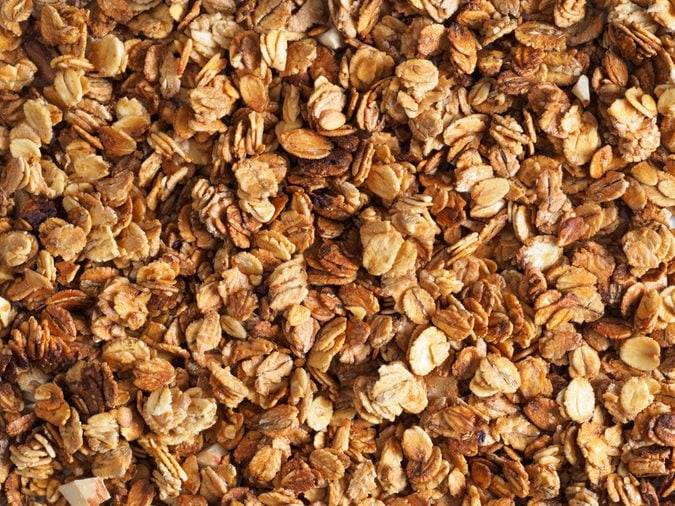
Granola
You may wonder what could be more natural and healthy than ingredients like berries, fruits, oatmeal, seeds, and grains. Unfortunately, what holds granola together is lots of added sugars like molasses, honey, and maple syrup. Read labels to find brands with more grams of fiber and fewer of sugar. Learn about foods with more sugar than you realize.
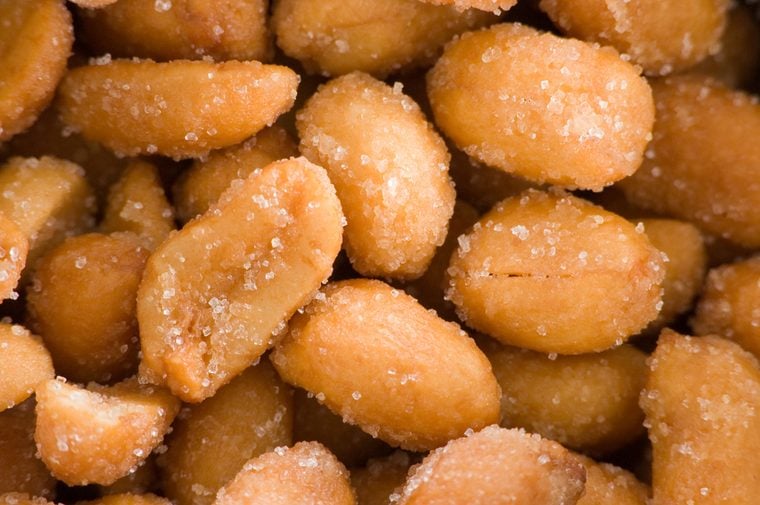
Honey-roasted peanuts
Nuts are tasty on their own. But when you eat them coated with salt and glazes, you’re negating their health benefits. For example, a serving of Planters Honey Roasted Peanuts gives you 4 grams of sugar per serving. Keep nuts healthy by eating them plain. Or, even better, jazz them up with chili pepper, cayenne, or cinnamon, suggests Auslander Moreno. “Remember that all spices fight inflammation,” she says, “so any flavor combination is fine as long as you’re not using a ton of salt, honey, or maple syrup.” Still craving that honey-roasted taste? Try dry roasted peanuts, which Gorin says have no oil or extra calories added to them. “Heat dry-roasted peanuts in a pan on the stovetop,” says Gorin. “Once they’re heated, toss them with a seasoning of your choice.” Gorin says she likes Italian seasoning, which is salt-free. If you find that the seasoning won’t stick, try spraying the nuts with a light coating of extra-virgin olive oil spray or grapeseed oil spray, she says. Did you know that peanuts aren’t actually nuts? Read why.
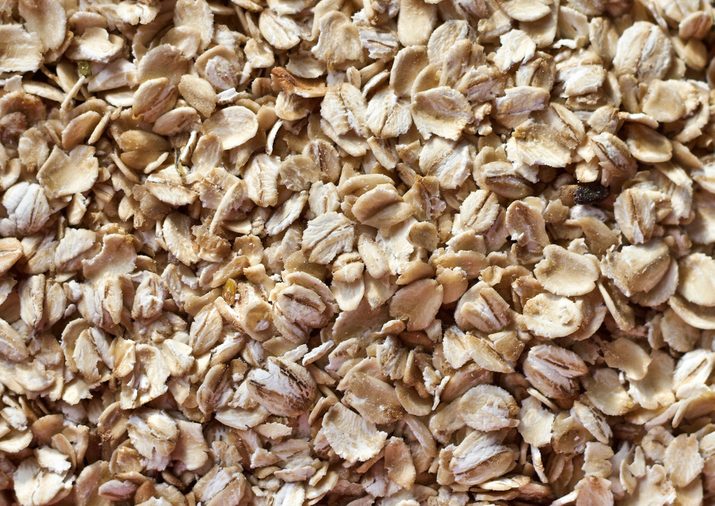
Instant oatmeal
Yes, those instant packs are conveniently portable and quick, but they also contain quite a bit of added sugar for such a small portion. One packet of Quaker Instant Oatmeal’s apple and cinnamon flavor has 12 grams sugar. That’s like eating sugar from a pouch. Instead, buy unsweetened varieties and flavor them up yourself. Add spices (like cinnamon), nuts or nut butter, stevia, chia seeds, and fruits. “Some people like their oatmeal to be more savory and serve it with eggs or mushrooms,” says Shereen Lehman, MS, a healthcare journalist and author of Superfoods for Dummies. Here are 10 healthy, tasty oatmeal toppings you never thought to try.
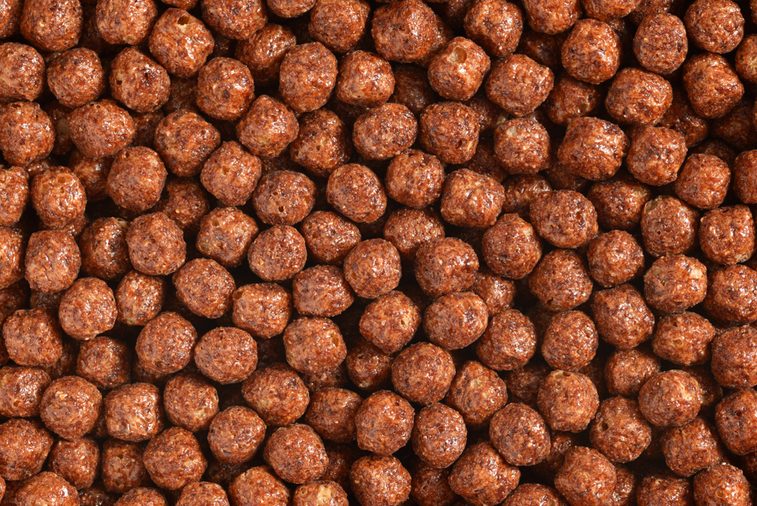
Breakfast cereal
It’s easy to spot the sugar on some kids’ cereals, as you can actually see it shimmering on the surface of many brands. But sugar is hiding in the bowls of “adult” cereals, too. Some popular ones load as many as 20 grams of sugar into a three-quarter cup serving. Since sugar content varies among brands, always read labels to see how much you’re getting. Or simply play it safe by sticking with plain oatmeal (not instant) or unsweetened cereal that you’ve jazzed up with fresh fruit and spices. Beware of these 14 more foods that have way more sugar than you might have realized.
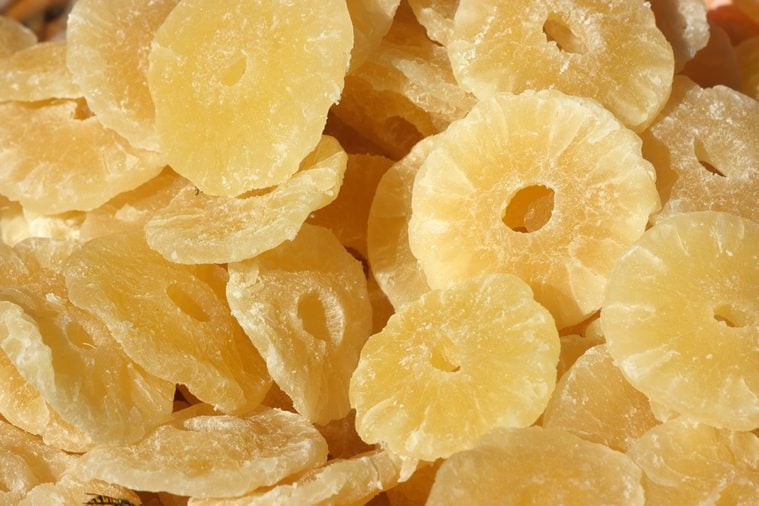
Dried fruit
It may have the word “fruit” in the name, but that’s where dried fruit’s healthfulness ends. A quarter-cup of Craisins—dried cranberries—contains 29 grams, or nearly 6 teaspoons, of sugar. And watch your serving sizes. Dried fruit is so compact that people tend to eat more than they realize in one serving. Look for unsweetened varieties or, even better, stick with fresh fruit. “You can use small amounts if you want to add it to trail mix, oatmeal, etc.,” advises Kristin Kirkpatrick, MS, RDN, manager of Wellness Nutrition Services at the Cleveland Clinic. “Combining dried fruits with fats and proteins can help slow the rise of blood sugar and insulin.” Bannan also suggests to choose dried fruits with unique health benefits. “For example, research suggests that eating about five prunes a day can help support healthy bones and maintain good digestive health,” she says. “A serving of prunes (four to five) has 3 grams of fiber and just 100 calories.”
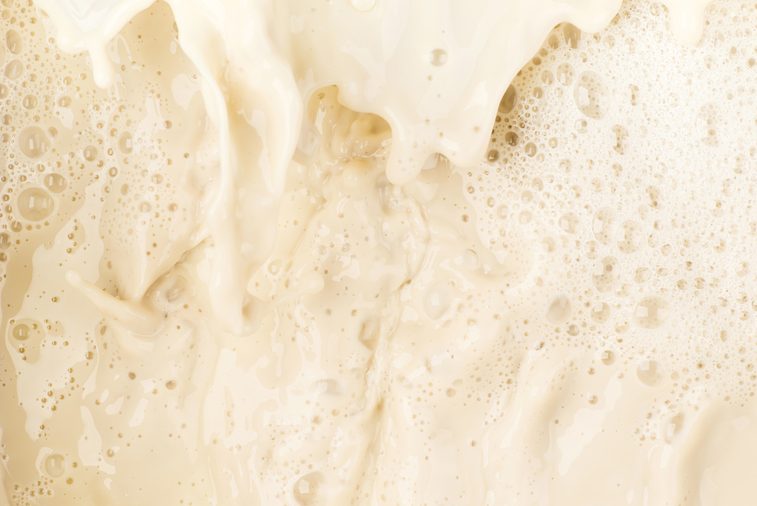
Milk alternatives
Soy and almonds on their own aren’t high in sugar. But their milk varieties are, with one cup of soymilk packing 10 grams of sugar and a cup of sweetened vanilla-flavored almond milk boasting 15 grams. Choose unsweetened versions and if you need to add flavor, mix in cinnamon, unsweetened cocoa powder, or vanilla or almond extract, advises Alix Turoff, MS, RD.
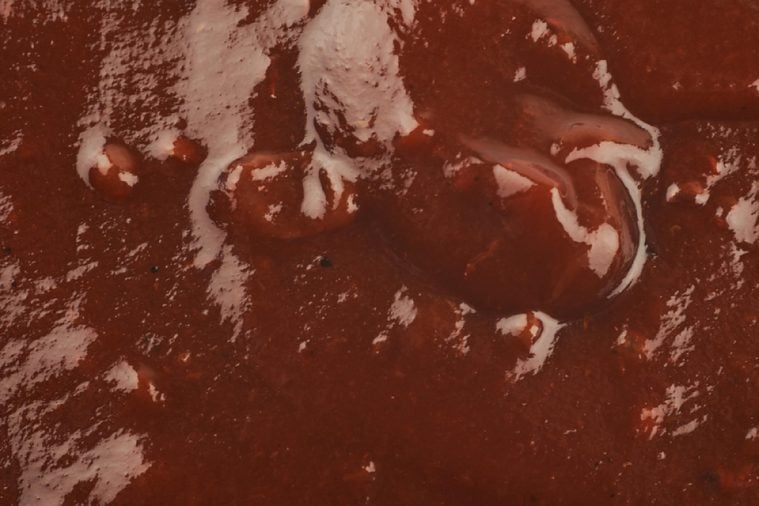
Barbecue sauce
It’s certainly healthier to grill your food than to fry it—but not if you’re coating your meats in sugary barbecue sauce. One tablespoon of sauce can have 6 grams of sugar. Look for brands with under 6 grams per 2 tablespoons, says Turoff. “You can also make your own,” she says. Turoff marinates her meat in fresh citrus—lemon, orange or lime. Then she adds spices based on the flavor profile she’s looking for. “So for tacos, I like to use smoked paprika, cayenne pepper, and cumin.” Or you could swap the BBQ sauce for hot sauce, says Bannan. A Sriracha Hot Chili Sauce has just 5 calories per teaspoon and 1 gram of sugar. “Plus, capsaicin, the chemical responsible for the heat of chili peppers, may offer health benefits and help regular blood sugar levels,” she says. Here are some healthy grilling recipes that dietitians and healthy chefs prefer.
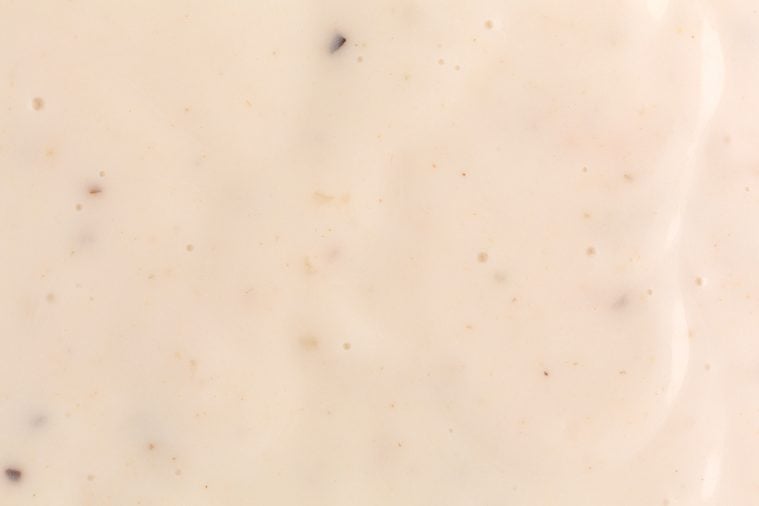
Salad dressings
Most manufacturers add sugar to salad dressing to improve its flavor, so sometimes the only way to avoid turning your salad into a dessert is to make your own dressing. “I keep organic white miso paste in the fridge,” says Auslander Moreno. “I mix it with olive oil and a bit of honey.”
Gorin uses 100 percent grape juice made with Concord grapes. “It adds a naturally sweet flavor to the dressing, plus a burst of vitamin C for immune support and polyphenols for a healthy heart,” she says. To make a dressing that lasts a few days, she whisks together one cup of the grape juice with 1/8 cup red wine or white vinegar and 1/8 cup extra-virgin olive oil—and then tosses it with her favorite salad greens. Here are 10 ways your “healthy” salad is making you gain weight.
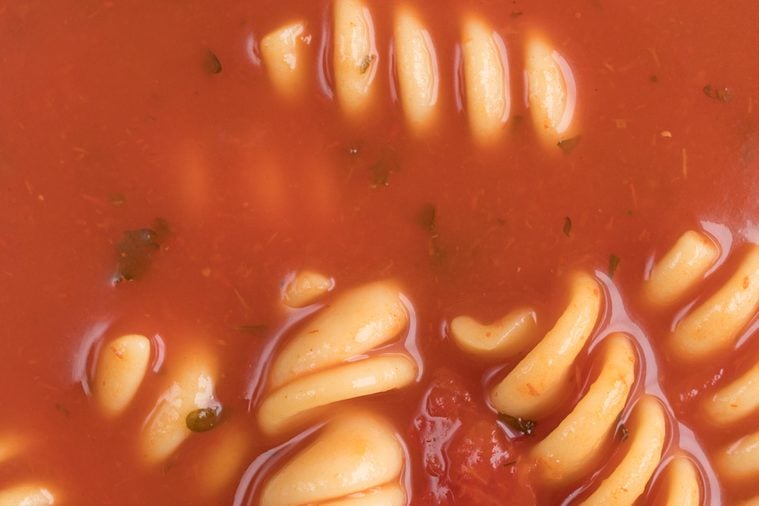
Canned soup
Canned soups are convenient, but most come with a surprising amount of added sugar. Again, it pays to read labels. “Many canned soups can be a good option, so don’t be discouraged,” says Turoff, who recommends Amy’s organic soups. Depending on the type of soup, some like tomato, butternut squash, and sweet potato are likely to have more added sugars than others. Campbell’s Slow Kettle Style Tomato & Sweet Basil Bisque, for example, has 24 grams of sugar per cup. Avoid ingredients like sugar, cane sugar, high-fructose corn syrup, and evaporated cane juice. “Broth-based options tend not to have the added sugar components,” says Kirkpatrick. “Here, you can really focus on smart label reading. If something says it’s ‘sweet,’ you can bet it probably has sugar added.”
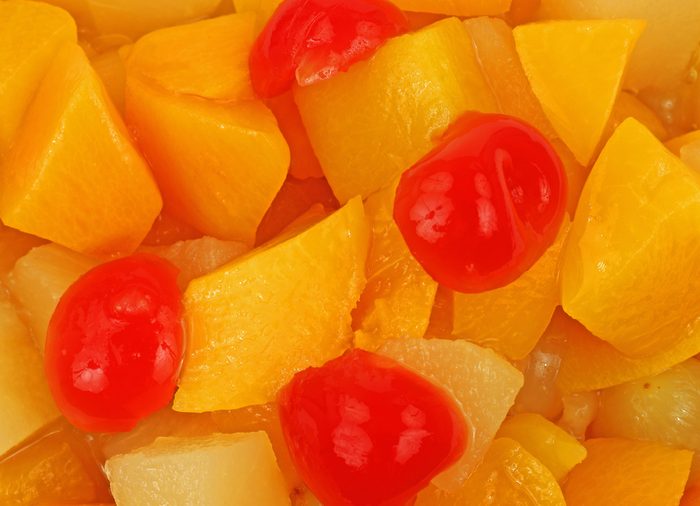
Canned fruit
All fruit contains natural sugars, but canned fruit, however, is generally loaded with high-fructose corn syrup. In fact, one cup of canned fruit has 37 g of sugar! Fresh fruit is always preferable, because it delivers fiber which promotes fullness and takes longer to digest, so it doesn’t have as big an impact on insulin levels. If you need to buy canned fruit, choose versions that are packed in water. Or, opt for frozen fruit. “Read the ingredients,” says Turoff. “Look for frozen fruit that has just one ingredient—actual fruit.” Here are 11 fruits and vegetables you may be better off buying frozen.
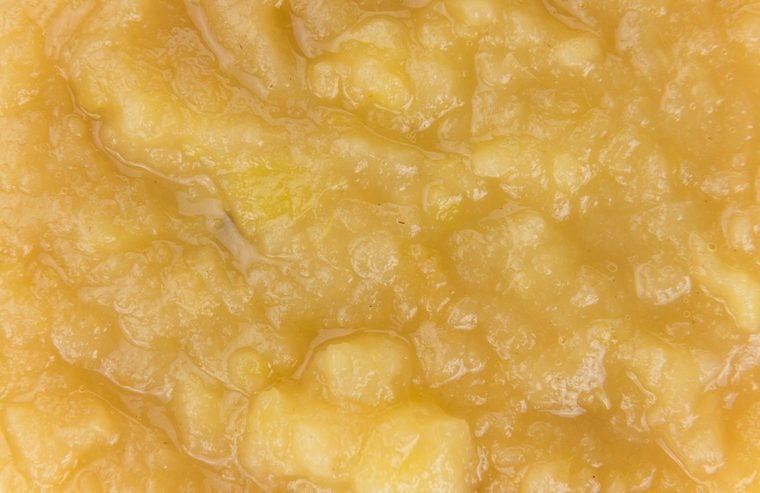
Sweetened applesauce
An apple a day keeps the doctor away, or so the adage goes. But this doesn’t apply to applesauce. One container of Mott’s applesauce has 22 g of sugar. “Go for the apple over the applesauce,” says Turoff. “Chewing is more satisfying.” She says that she often uses unsweetened applesauce in baked goods, in place of fat and sugar. Bannan raves about unsweetened applesauce made with 100 percent real fruit and nothing added. “It’s perfectly sweet enough with just the natural flavors of the apples,” she says. Don’t miss these 8 surprising ways to beat your sugar addiction.